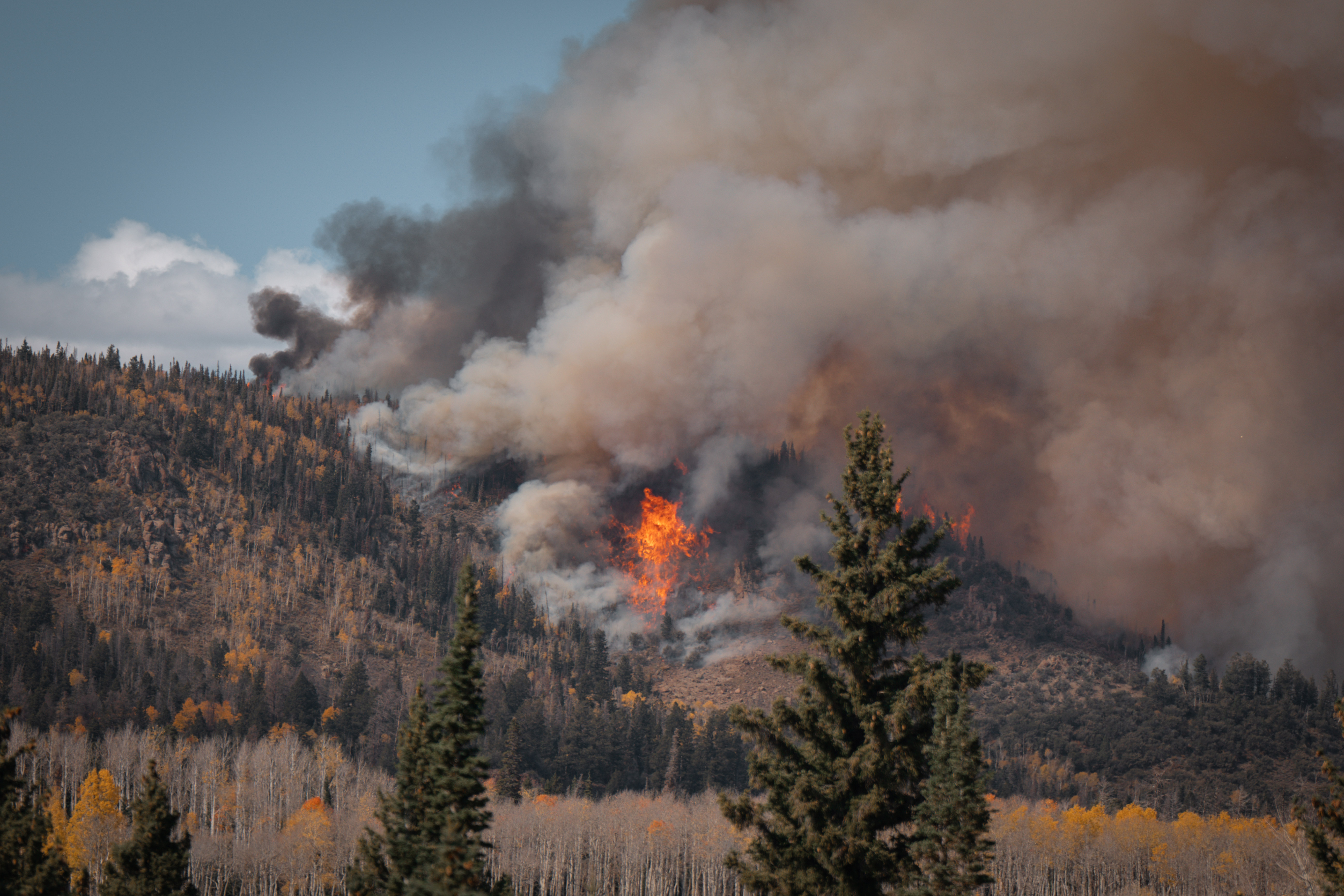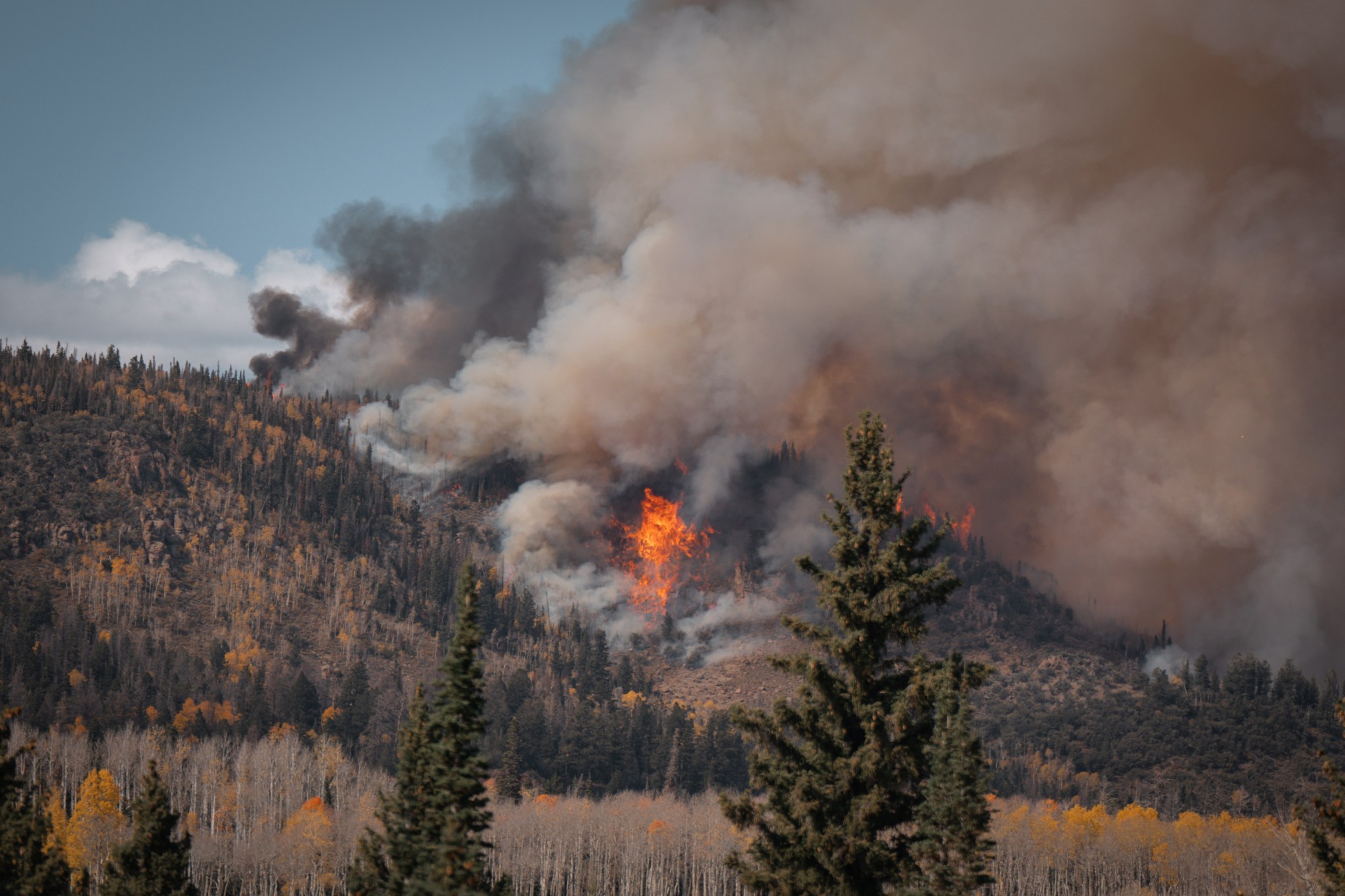Studying a Planned Fire
Flames burn orange through green conifers and golden aspen on the slopes of Monroe Mountain in Utah’s Fishlake National Forest, sending gray and brown smoke billowing into the sky in this image from Oct. 9, 2023. This fire was intentionally set with a fire-dripping device suspended from a helicopter. The burn aimed to reintroduce fire to the Monroe Mountain […]


Flames burn orange through green conifers and golden aspen on the slopes of Monroe Mountain in Utah’s Fishlake National Forest, sending gray and brown smoke billowing into the sky in this image from Oct. 9, 2023.
This fire was intentionally set with a fire-dripping device suspended from a helicopter. The burn aimed to reintroduce fire to the Monroe Mountain region. Fire promotes aspen regeneration and reduces accumulated brush and dead vegetation that could fuel a larger uncontrolled fire.
Scientists from NASA’s FireSense project, along with dozens of others from the Forest Service and other organizations and universities, collected data from the ground and from the sky as part of the Forest Service’s Fire and Smoke Model Evaluation Experiment. Observing a prescribed high-intensity fire gave NASA an opportunity to test technologies and demonstrate their effectiveness in supporting wildland fire management across the life cycle of a fire.
Read more about fire’s effect on this region and what we can learn from studying fires.
Image Credit: NASA/Grace Weikert





































